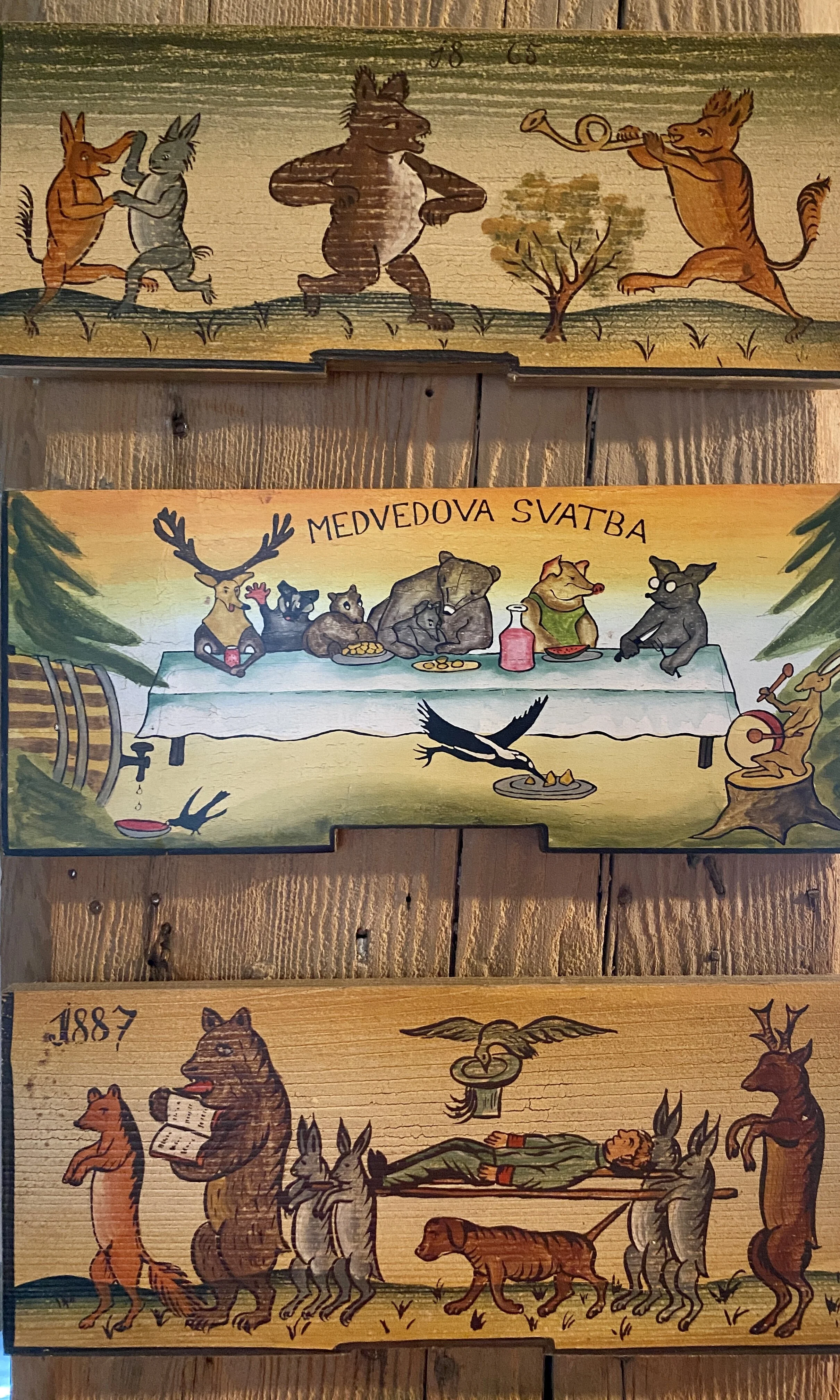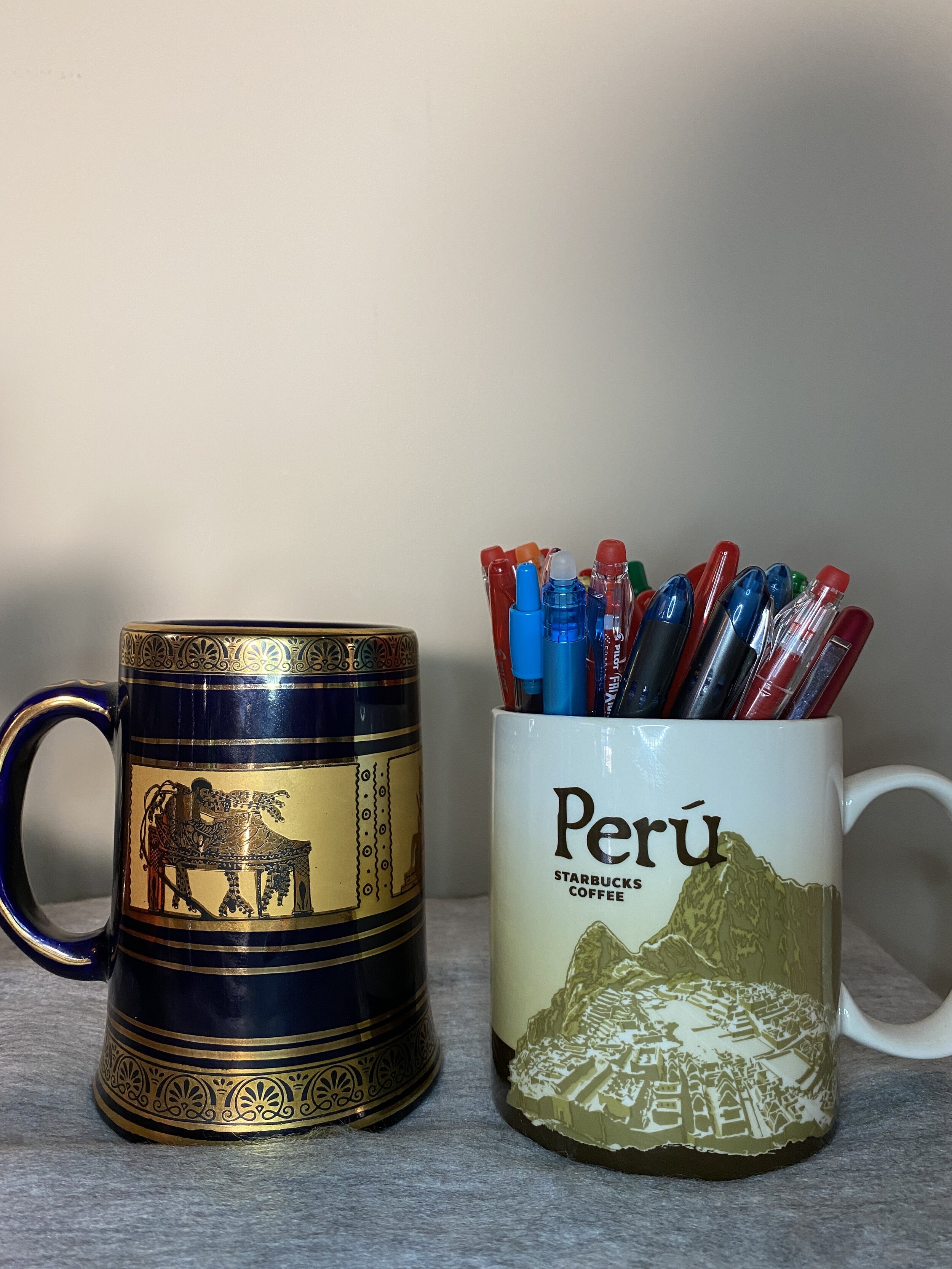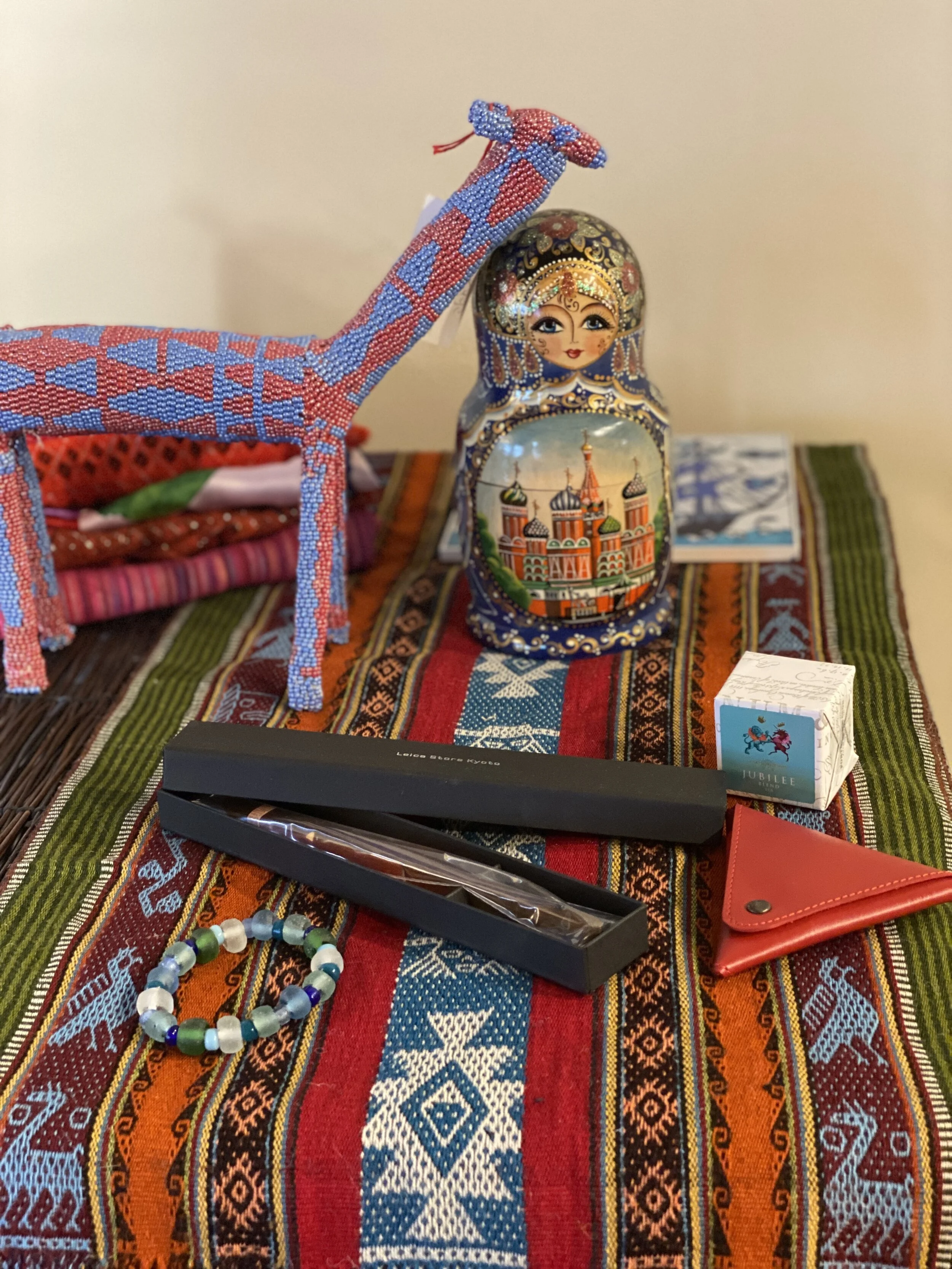Treasures and Memories...
As a kid, the mementos my dad collected in his travels with the US Air Force served as visible reminders of the world beyond Iowa. I recently found myself going through those treasures. That experience, and the last 16 months mostly at home with my own travel purchases, has caused me to reflect on the things we carry home from our travels. In the process, I came up with a few guidelines I intend to use going forward. If you’re headed out on a trip soon, they may help you avoid coming home weighed down with purchases you regret.
Painted beehive panels from Slovenia.
- Careful with collections. We buy one Christmas ornament on every trip. They’re generally light and easy to pack, and provide an annual reminder of past adventures. (And if you’re in a place or visiting at a time when Christmas ornaments are difficult to come by, consider a keychain. Add an ornament hanger and no one will ever know the difference.) On the other hand, I once had a colleague who bought a Starbucks mug in every overseas city he visited. I started doing the same, until I quickly realized it was a great way to acquire heavy, breakable souvenirs that don’t really support the local economy. Instead, I purchase one Starbucks mug per country. And if I know there’s a Starbucks at the airport, I often hold off on buying one until we are departing. (Risky, but it’s worked so far!) While the mugs are pretty economical and generally fit into the corner of a carry-on bag, I’m not sure I would choose them again if I were starting over. My collection of postcards takes up a lot less space, both in my suitcase and at home.
Like father . . . One of my dad’s many mugs from around the world (this one from Greece) from his Air Force travels in the 1960s and 70s; my Starbucks mug from Peru, circa 2019.
- Mail yourself a postcard. Buy a postcard at a sight you particularly enjoy, address it to yourself, and jot down some notes about your trip. If you are rushed for time, your hotel may have stamps and be willing to mail it for you, but if you can, head to the post office; it can be a memorable way to interact with someone who doesn’t rely on tourists for their income. The postcard may not arrive for months, but it’s fun to have a reminder of travel highlights long after you’ve unpacked.
- Choose something you will actually see or use every day. I never set out to buy scarves or fabric pouches, but somehow I often end up purchasing them. Both are light and easy to pack, as well as easy to use. As just two examples, pouches from Peru and Mexico sit on my desk holding snacks and backup corded headphones, respectively. I also use them to pack jewelry and cords, and to corral smaller items in my purses and backpack.
- Purchase items you’ll consume. None of us need more to dust. Buying hot sauce in New Orleans, tea in London, spices in Istanbul, skin care products in Seoul, or macadamia nut pancake mix in Hawaii enables you to bring travel memories into your everyday life – and avoid weighing yourself down with clutter both during and after your travels.
- Shop places you wouldn’t at home. In 20 years in Chicago, I’ve never purchased an item off a blanket on the sidewalk. But the treasures I’ve bought off blankets at open air markets all over the world, like a winter hat in Bolivia, many of my beloved pouches, and jewelry in South Africa, have been more reasonably priced and led to more interesting interactions than just walking into a store and picking an item off a shelf.
On the other end of the spectrum, I’ve never considered buying handmade shoes in Chicago. But the handmade, custom shoes I bought from a cooperative in Lima cost less than a pair of Cole Hahn flats and are much more treasured and special. (They also sell online. https://cooperativehandmade.com)
- Consider clothing. During a high school trip to Washington, DC, I had the bright idea to buy a $5 t-shirt from a sidewalk vendor. Unsurprisingly, one washing left it doll sized, leading me to steer clear of buying clothing when I traveled. But during our Round-the-World trip in 2018, I found myself buying clothes as a break from the same clothes for 10 weeks and to take home something I could use right away. These have included a shirt found in a Tokyo train station Uniqlo, one bought off a blanket in downtown Mexico City, and a hand embroidered shirt from a store in Kiev. In fact, in one very memorable travel moment, I found myself in a market in rural Ecuador where the temperature was 20 degrees warmer than expected. Having planned poorly, I found myself overheating in my sweater. I ended up buying a shirt and changing into it while hiding in the market stall. I still wear that $10 shirt regularly, and always smile remembering the surprise and laughter of the seller.
- Know what you’re buying. I often buy jewelry when I travel. But after a not-inexpensive necklace from Bosnia fell apart twice, I now seek out inexpensive pieces. Ironically, my $2 bracelets from Cuba or $10 bracelet from rural Turkey have turned out to be some of my favorite jewelry. And because I bought them knowing they weren’t destined to become heirlooms, these inexpensive mementos have always brought me a lot of happiness.
A collection of the practical and easy to pack – and the opposite. From back left: scarves from Turkey and France, a bracelet from Hawaii, a folding fan from Leica Store Kyoto, a handmade leather pouch from Seville, Spain (perfect for transporting SD cards), tea from London, a hand painted (and large) Matryoshka doll from Russia, a beaded giraffe from a collective in South Africa, and a tile from Portugal, all displayed on a handmade weaving from a weaving collective in rural Peru.
- Do your homework. When you go on a trip knowing what an area is known for, it is much easier to resist the siren call of plastic trinkets at every museum gift shop. By waiting for the special item you’ve planned to purchase, or at least having a sense of what items should cost, you’ll likely spend less, and buy fewer items with more meaning. Doing a little homework, for example, meant going to Slovenia knowing a little about the history of Slovenian bee boards https://slovenia.si/art-and-cultural-heritage/stories-from-beehive-panels/ (which also happen to be light, easy to pack, and great reminder of your travels). (Not initially intended as condo décor, they ensure your bees don’t get lost, help beekeepers avoid confusing their hives, and may just protect against curses.) A little homework can also help you find the weaving cooperative or artists’ market, so that your purchases can help locals rather than the same corporations you can buy from at home.
- Rather than stuff, consider setting aside the money you would’ve used for shopping to print and frame your photos.
- Support local camera shops. Just about every independent camera shop in the world will welcome travelers, and may just have that vintage camera you’ve always wanted.
The souvenirs we buy have much less bearing on our travel memories than our experiences, and selecting your travel purchases wisely can help you relive those special travel memories. We’d love to hear from you in the comments: What travel purchase has been your favorite?



